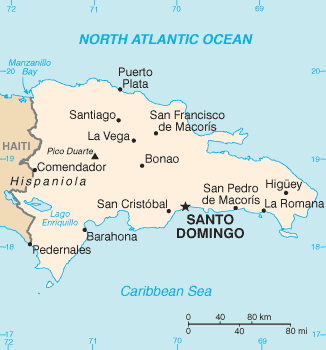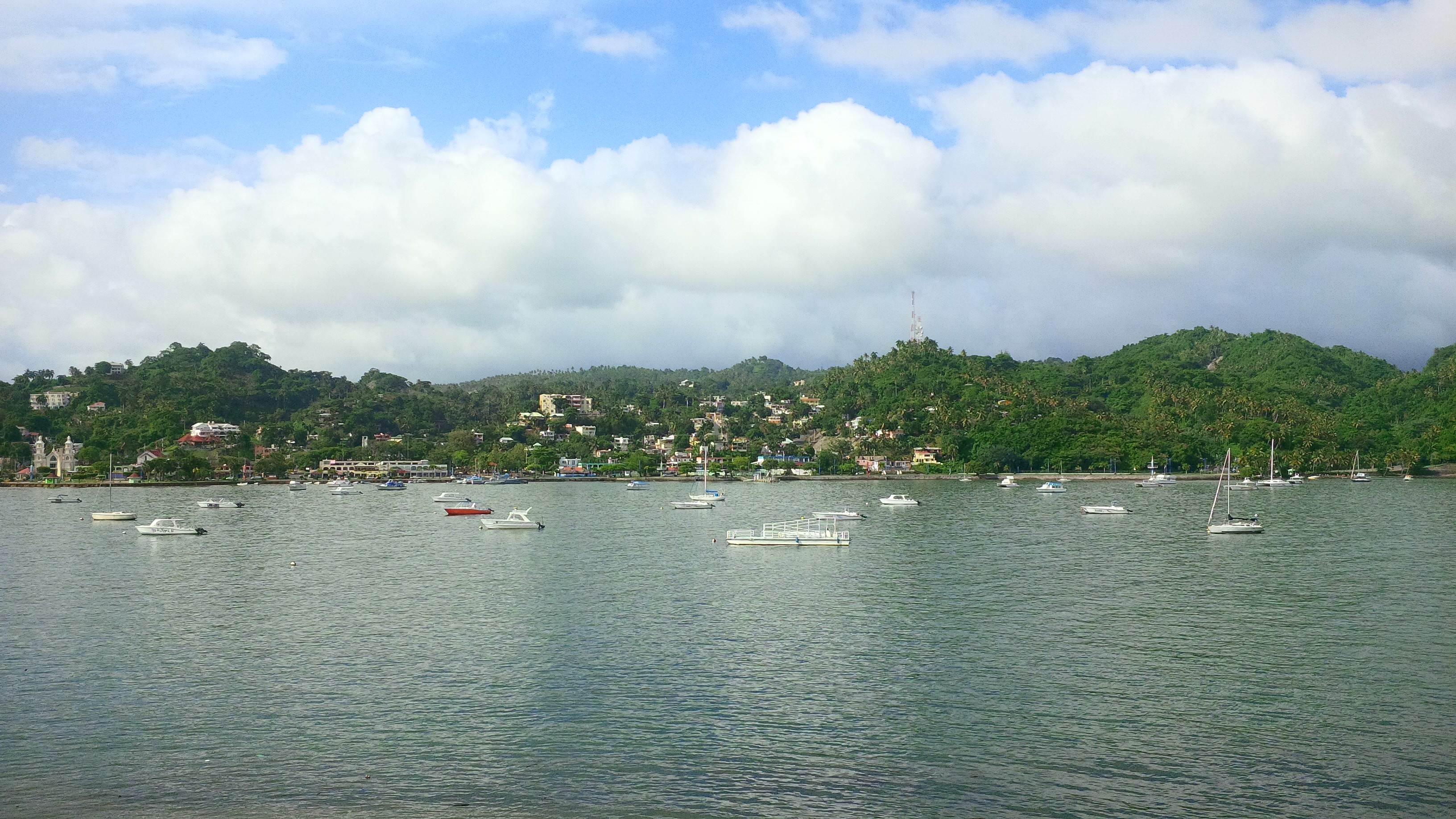|
Las Galeras, Samaná
Las Galeras is a Municipal district in the town Santa Bárbara de Samaná, Samaná province in the northeast coast of Dominican Republic. It is located at the eastern end of the Samaná Peninsula, on the Rincón Bay that is found between Cabrón and Samaná capes. ''Las Galeras'', in English ''The Galleys'' (a galley was a war ship where prisoners and slaves were used to move the ship), because two galleys stayed here during the 16th century. Population In the last national census (2002), the population of Las Galeras is included with that of Santa Bárbara de Samaná.Censo 2002 de Población y ViviendaOficina Nacional de Estadistica/ref> There are approximately 6,000 people living in the area of Las Galeras. The population of Las Galeras is mostly Dominican, although like most of Dominican towns and cities in the country there is a big percentage of Haitian citizens. Most of the remaining population is French, Italian, North-American, Canadian, English, Argentinian, Belgian, ... [...More Info...] [...Related Items...] OR: [Wikipedia] [Google] [Baidu] |
Provinces Of The Dominican Republic
A province is almost always an administrative division within a country or state. The term derives from the ancient Roman ''provincia'', which was the major territorial and administrative unit of the Roman Empire's territorial possessions outside Italy. The term ''province'' has since been adopted by many countries. In some countries with no actual provinces, "the provinces" is a metaphorical term meaning "outside the capital city". While some provinces were produced artificially by colonial powers, others were formed around local groups with their own ethnic identities. Many have their own powers independent of central or federal authority, especially in Canada and Pakistan. In other countries, like China or France, provinces are the creation of central government, with very little autonomy. Etymology The English word ''province'' is attested since about 1330 and derives from the 13th-century Old French , which itself comes from the Latin word , which referred to the sphere ... [...More Info...] [...Related Items...] OR: [Wikipedia] [Google] [Baidu] |
Samaná Province
Samaná () is a Provinces of the Dominican Republic, province of the Dominican Republic in the Samaná Peninsula located in the eastern region. Its Capital (political), capital is Samaná (town), Santa Bárbara de Samaná, usually known as Samaná. The province is on the coast of the Atlantic Ocean in the northeastern part of the Dominican Republic. It is known for the mountains of which it is almost entirely formed. Samaná has numerous beaches. Samana was originally larger covering the area of what is now the María Trinidad Sánchez Province, María Trinidad Sánchez province, before being divided during the Rafael Trujillo, Trujillo era. Geography The Samana province is occupied by the Sierra de Samaná mountain range, which reaches many of the coastal areas. The highest mountain in this range (and in the province) is located in the eastern portion and is called La Meseta. Samana has a tropical rainforest climate, with an annual average temperature of 25.9 degrees Celsius. A ... [...More Info...] [...Related Items...] OR: [Wikipedia] [Google] [Baidu] |
Municipalities Of The Dominican Republic
The municipalities of the Dominican Republic are, after the regions and the provinces, the third level of the political and administrative division of the Dominican Republic. The division of provinces into municipalities (''municipios'') is established in the Constitution and further regulated by Law 5220 on the Territorial Division of the Dominican Republic. It was enacted in 1959 and has been frequently amended to create new provinces, municipalities and lower-level administrative units. Municipalities may be further divided into ''secciones'' (literally: sections) and ''parajes'' (literally: places or neighborhoods). Municipal districts (''distritos municipales'') may be formed in the case of municipalities with several urban centres. Law 176-07 replaced ''Law Nº 3455 de Organización Municipal'' from January, 29, 1953; that had long served as the basis for municipal administration, see The provinces as the second level of political and administrative division contain at lea ... [...More Info...] [...Related Items...] OR: [Wikipedia] [Google] [Baidu] |
Government Of The Dominican Republic
The Dominican Republic is a representative democracy, where the President of the Dominican Republic functions as both the head of the government and head of the multi-party system. Executive power is exercised by the government. Legislative power is vested in the bicameral National Congress. The Judiciary is independent of the executive and the legislature. Political Culture Sovereignty With the proclamation of the first constitution in the Dominican Republic on 6 November 1844 in the city of San Cristobal, the Dominican theory of sovereignty, 'independence politics', was formed. The Dominican Republic would remain for the most part republican and representative. The constitution of San Cristobal established the legislature as superior to the other branches, the judiciary as an independent and the Executive to run the state day-to-day under the oversight of the judiciary and the legislature. The Congress of the Dominican Republic consists of the Chamber of Deputies and th ... [...More Info...] [...Related Items...] OR: [Wikipedia] [Google] [Baidu] |
Samaná (town)
Samaná (old spelling: Xamaná), in full Santa Bárbara de Samaná, is a town and municipality in northeastern Dominican Republic and is the capital of Samaná Province. It is located on the northern coast of Samaná Bay. The town is an important tourism destination and is the main center for whale-watching tours in the Caribbean region. The town has three municipal districts: El Limón, Las Galeras, and Arroyo Barril. According to the 2012 population and housing census, the municipality has a total population of 108,179. Geography Samaná is located in a small plain close to the coast but, now, most of the town is in the hills that enclose the plain. It is the largest municipality of the province. It has a total area of 412.11 km² (almost 49% of the total area of the province), including the three municipal districts that are part of the municipality. Most of the territory is occupied by the Sierra de Samaná, a short mountain range with steep slopes but no high mou ... [...More Info...] [...Related Items...] OR: [Wikipedia] [Google] [Baidu] |
Dominican Republic
The Dominican Republic ( ; es, República Dominicana, ) is a country located on the island of Hispaniola in the Greater Antilles archipelago of the Caribbean region. It occupies the eastern five-eighths of the island, which it shares with Haiti, making Hispaniola one of only two Caribbean islands, along with Saint Martin, that is shared by two sovereign states. The Dominican Republic is the second-largest nation in the Antilles by area (after Cuba) at , and third-largest by population, with approximately 10.7 million people (2022 est.), down from 10.8 million in 2020, of whom approximately 3.3 million live in the metropolitan area of Santo Domingo, the capital city. The official language of the country is Spanish. The native Taíno people had inhabited Hispaniola before the arrival of Europeans, dividing it into five chiefdoms. They had constructed an advanced farming and hunting society, and were in the process of becoming an organized civilization. The Taínos also in ... [...More Info...] [...Related Items...] OR: [Wikipedia] [Google] [Baidu] |
Agriculture
Agriculture or farming is the practice of cultivating plants and livestock. Agriculture was the key development in the rise of sedentary human civilization, whereby farming of domesticated species created food surpluses that enabled people to live in cities. The history of agriculture began thousands of years ago. After gathering wild grains beginning at least 105,000 years ago, nascent farmers began to plant them around 11,500 years ago. Sheep, goats, pigs and cattle were domesticated over 10,000 years ago. Plants were independently cultivated in at least 11 regions of the world. Industrial agriculture based on large-scale monoculture in the twentieth century came to dominate agricultural output, though about 2 billion people still depended on subsistence agriculture. The major agricultural products can be broadly grouped into foods, fibers, fuels, and raw materials (such as rubber). Food classes include cereals (grains), vegetables, fruits, cooking oils, meat, milk, ... [...More Info...] [...Related Items...] OR: [Wikipedia] [Google] [Baidu] |
Fishing
Fishing is the activity of trying to catch fish. Fish are often caught as wildlife from the natural environment, but may also be caught from stocked bodies of water such as ponds, canals, park wetlands and reservoirs. Fishing techniques include hand-gathering, spearing, netting, angling, shooting and trapping, as well as more destructive and often illegal techniques such as electrocution, blasting and poisoning. The term fishing broadly includes catching aquatic animals other than fish, such as crustaceans ( shrimp/ lobsters/crabs), shellfish, cephalopods (octopus/squid) and echinoderms ( starfish/ sea urchins). The term is not normally applied to harvesting fish raised in controlled cultivations ( fish farming). Nor is it normally applied to hunting aquatic mammals, where terms like whaling and sealing are used instead. Fishing has been an important part of human culture since hunter-gatherer times, and is one of the few food production activities that have persisted ... [...More Info...] [...Related Items...] OR: [Wikipedia] [Google] [Baidu] |
Tourism
Tourism is travel for pleasure or business; also the theory and practice of touring (other), touring, the business of attracting, accommodating, and entertaining tourists, and the business of operating tour (other), tours. The World Tourism Organization defines tourism more generally, in terms which go "beyond the common perception of tourism as being limited to holiday activity only", as people "travelling to and staying in places outside their usual environment for not more than one consecutive year for leisure and not less than 24 hours, business and other purposes". Tourism can be Domestic tourism, domestic (within the traveller's own country) or International tourism, international, and international tourism has both incoming and outgoing implications on a country's balance of payments. Tourism numbers declined as a result of a strong economic slowdown (the late-2000s recession) between the second half of 2008 and the end of 2009, and in consequence of t ... [...More Info...] [...Related Items...] OR: [Wikipedia] [Google] [Baidu] |
Playa La Playita
Playa (plural playas) may refer to: Landforms * Endorheic basin, also known as a sink, alkali flat or sabkha, a desert basin with no outlet which periodically fills with water to form a temporary lake * Dry lake, often called a ''playa'' in the southwestern United States Populated places United States * Playas, New Mexico, an unincorporated community in New Mexico * Playa, Añasco, Puerto Rico, a barrio in the municipality of Añasco, Puerto Rico * Playa, Guayanilla, Puerto Rico, a barrio in the municipality of Guayanilla, Puerto Rico * Playa, Ponce, Puerto Rico, a barrio of Ponce, Puerto Rico * Playa, Santa Isabel, Puerto Rico, a barrio in the municipality of Santa Isabel, Puerto Rico * Playa, Yabucoa, Puerto Rico, a barrio in the municipality of Yabucoa, Puerto Rico Cuba * Playa, Havana, one of the 15 municipalities of the City of Havana, Cuba Ecuador * Playas Canton, Ecuador ** Playas, Ecuador, the administrative center of the Playas Canton Other * The Playa, Black Rock ... [...More Info...] [...Related Items...] OR: [Wikipedia] [Google] [Baidu] |
Rincon Beach
Rincon or Rincón (Spanish for ''corner'') may refer to: * Rincon (meadow) * Rincon (abandoned meander) People * Rincon (surname) * Rincón (footballer, born 1977), born Gilvan Santos Souza, Brazilian football striker * Rincón (footballer, 1980-2013), born Claudiney Ramos, Equatoguinean football defensive midfielder * Rincón (footballer, born 1987), born Carlos Eduardo de Castro Lourenço, Brazilian football centre-back * Rincon (footballer, born 1994), born Rincon Teixeira da Rocha, Brazilian football forward Places South America and Caribbean ;Argentina * Rincón (Catamarca), Argentine town in Catamarca Province * Rincón de Los Sauces, Argentine town in Neuquén Province * Rincón (Córdoba), Argentine town in Córdoba Province ;Bonaire * Rincon, Bonaire, one of only two towns on the island of Bonaire ;Costa Rica * Rincón de Sabanilla, district in San Pablo canton ;Dominican Republic * Rincón, municipal district in La Vega Province ;Falkland Islands * Rincon Grande, ... [...More Info...] [...Related Items...] OR: [Wikipedia] [Google] [Baidu] |







